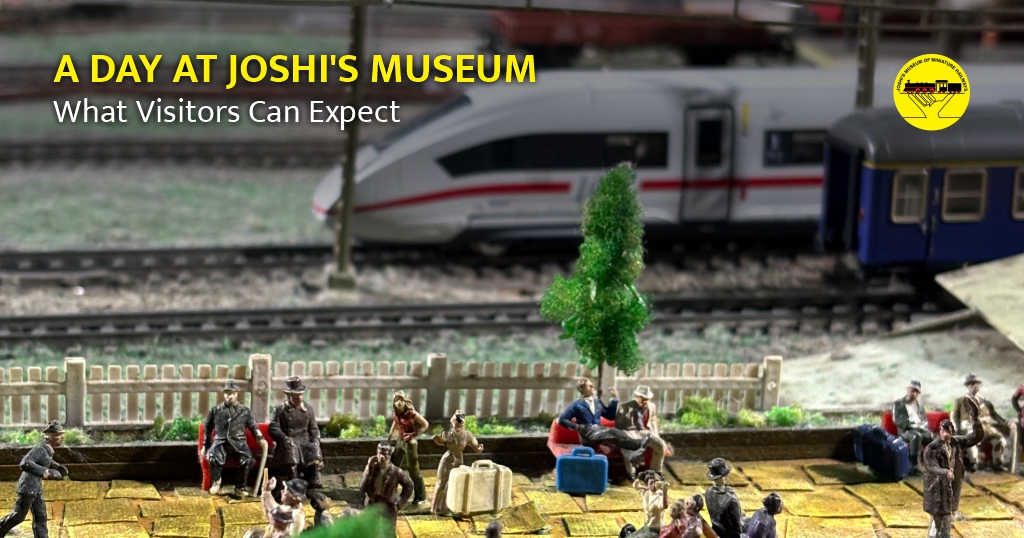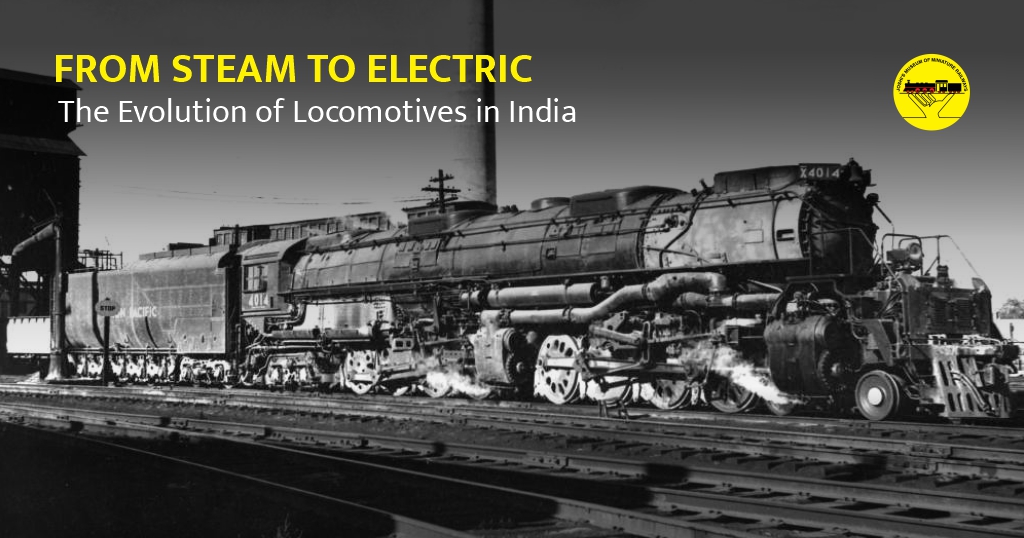

India’s railway network is more than just a way to get from one city to another—it’s a journey through history, engineering marvels, and changing technology. At Joshi’s Museum of Miniature Railways in Pune, we bring this fascinating story to life through working models and interactive displays. One of the most exciting stories we share is how Indian locomotives have evolved—from the chugging steam giants of the 19th century to the sleek electric engines of today.
In this article, we’ll take you on a ride through time, tracing how locomotives in India transformed with new technologies, expanding the nation’s reach and connecting its people like never before.
Before we dive into steam, diesel, and electric locomotives, it’s important to understand how and why railways were introduced in India by the British, and what role they played in shaping the country.
India’s first railways were conceived not for public benefit but to serve the interests of the British colonial government and private investors. One of the strongest advocates of rail transport in India was Lord Dalhousie, Governor-General of India from 1848 to 1856. In his famous Railway Minute of 1853, he laid out the strategic importance of connecting India by rail—not just for economic gains, but also to secure military control across the vast subcontinent.
His vision was soon supported by major British companies such as:
These companies were funded by British capital and operated under a guarantee system, where the British government promised a fixed return on investments—ensuring profits even if the railways ran at a loss.
Though colonial motives were dominant, there were real and urgent Indian needs that railways ended up addressing:
While the British planned and financed the early railway system, it was built on the backs of thousands of Indian laborers, engineers, masons, and carpenters. Often working in harsh conditions, these workers laid down the foundations of a network that would later become the fourth-largest railway system in the world.
Key colonial-era personalities involved in early railway construction included:
Indian names often get overlooked in colonial narratives, but they played crucial roles. For example:
India’s railway journey began in 1853, when the first passenger train ran from Bombay (now Mumbai) to Thane, powered by a steam engine named “Lord Falkland”. This marked the start of the Steam Age in Indian Railways.
A steam engine works by boiling water to create steam, which then pushes pistons to move the wheels. These locomotives needed a lot of coal and water, and they released thick plumes of smoke. But despite their environmental impact, they were revolutionary at the time.
Steam engines served India well, especially during independence and the early years of nation-building. But they required high maintenance, consumed enormous resources, and polluted the environment.
By the mid-20th century, the world was moving toward faster, cleaner locomotives. India followed suit by introducing diesel engines in the 1950s and 1960s. These engines used diesel fuel and internal combustion technology, reducing the dependence on coal and manual labor.
One of the most famous diesel locomotives in India was the WDM-2, introduced in the 1960s and manufactured in collaboration with ALCO (American Locomotive Company). It became the backbone of Indian Railways for both passenger and freight traffic.
The “WDM” in WDM-2 stands for:
As the need for faster, eco-friendly, and high-capacity transportation grew, Indian Railways turned to electric locomotives. Electrification started as early as the 1920s near Mumbai, but large-scale adoption picked up after the 1980s.
Electric engines draw power from overhead wires through a device called a pantograph. They are silent, faster, and emit zero smoke.
As of 2024, over 75% of India’s broad-gauge routes are electrified, and Indian Railways is moving toward becoming 100% electric and net zero carbon emitter by 2030.
With every evolution in locomotive technology, the passenger experience also transformed.
| Era | Locomotive Type | Average Speed | Experience |
| 1850s–1950s | Steam | 30–50 km/h | Noisy, slow, nostalgic |
| 1950s–1990s | Diesel | 60–90 km/h | Faster, reliable, less smoke |
| 1990s–Present | Electric | 100–180 km/h | Quiet, smooth, fast |
Trains became not just faster, but also safer, more punctual, and environmentally sustainable.
While early locomotives were imported, India soon began designing and manufacturing its own engines. Establishments like:
India also collaborates with international players like GE, Alstom, and Siemens, bringing cutting-edge rail technology to the country.
At Joshi’s Museum of Miniature Railways, we bring this evolution to life in a way textbooks can’t. Our exhibits include:
It’s not just about watching trains—it’s about understanding how engineering meets imagination. Our museum helps young minds grasp how each innovation brought India closer, town by town, track by track.
Visit us to see miniature models of steam locomotives puffing smoke, diesel engines roaring through tiny stations, and sleek electric trains zipping across miniature cities!
Even as electric locomotives dominate the tracks today, the future is already knocking.
India’s railway journey isn’t just a tale of the past; it’s a fast-moving story of progress, and you’re invited to be part of it.
Locomotives are more than machines. They reflect India’s industrial growth, environmental concerns, and global ambitions. From steam’s nostalgic charm to electric’s silent speed, each phase tells us something about our country’s priorities, challenges, and resilience.
And at Joshi’s Museum of Miniature Railways, we’re proud to keep this story alive for every student, rail enthusiast, and curious visitor who walks through our doors.
Plan your visit today, and step into a world where the trains may be tiny—but the ideas are enormous